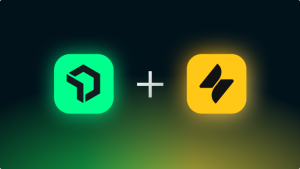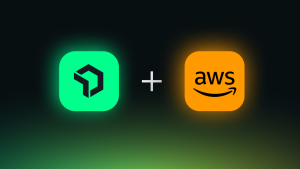
More than 17 million developers rely on the Postman API platform to design, build, test, document, deploy, and monitor APIs within a collaborative platform. Postman’s monitoring feature allows users to observe API performance and quality in detail, but downstream operations teams may only get a high-level view of API performance with metrics such as CPU utilization, memory consumption, and database throughput. Similarly, for developers to understand how a single API affects the overall application within a broader deployment, Postman needs to ingest contextual data for APIs from another telemetry source.
Introducing New Relic API monitoring with Postman
To solve these problems, New Relic and Postman have built an end-to-end integration so you can monitor the functionality and performance of your APIs while Postman monitors the rest of your observability data at the same time. Now, you can get deeper pre-production API metrics down to the individual endpoint level. You can also use the two-way integration to receive contextual data about deployments from New Relic One in the Postman API platform.
The Postman and New Relic integration brings API observability data to developers and engineers where they already spend their time—whether they are DevOps engineers monitoring their stack in New Relic One or API developers seeking real-time application performance data in context of their API deployments in Postman.
To learn more about the new integration with Postman and start using it today, check out these links:
- Install the Postman quickstart and get started in minutes.
- Read the integration documentation.
- If you’re not already using New Relic One, get started with New Relic for free. Your free account includes 100 GB/month of free data ingest, one free full-access user, and unlimited free basic users.
- If you’re not already using Postman, sign up for Postman. The integration is available to all Postman customers, including free-tier users.
To make it even easier to view your API data, we’ve also created a new quickstart in New Relic Instant Observability (I/O) that will help you get up and running faster with a pre-built dashboard that includes the API and infrastructure metrics you need in one place.
Here's an example of the Postman monitor dashboard in New Relic:
All developers can get started for free with New Relic and use the API monitoring feature as part of the more than 450 integrations included with New Relic’s observability platform. Every new sign-up in New Relic receives 100GBs per month of free data ingest, one full platform user, and unlimited basic users, queries, dashboards, and alerts.
Benefits of the new integration and quickstart include:
- Unified visibility: View API metrics (response time, errors, failed test) alongside application and infrastructure metrics in one unified and customizable dashboard.
- Create alerts: Leverage New Relic’s advanced alerting capability such as self-adjusting thresholds, anomaly detection, and outlier detection so you get notified when your APIs have poor performance.
- Debug performance issues in context: Debug performance issues by comparing the performance of your APIs (such as latency metrics) and functionality (such as response correctness) with full stack metrics (CPU, RAM usage, and network stats) in context.
- Easy access: Existing customers with New Relic full platform access can set up the integration for no additional cost. New customers can get started for free without a credit card.
Viewing New Relic APM data in Postman
How to send real-time API metrics from Postman to New Relic
To start monitoring your API performance and visualize results from Postman monitors in New Relic, watch the following video or follow the steps listed after the video.
- Set up your accounts. You need to have New Relic and Postman accounts to use the integration. If you aren’t already using New Relic One, get a free account. (2 minutes)
- Retrieve your New Relic API key. Go to your API keys in New Relic. Select the three dots next to the INGEST - LICENSE key and select Copy key to save it for later. (1 minute)
- Enable the integration in Postman. From Integrations, search for New Relic. There are two integrations available. Select the option labeled Bring Postman monitor results into New Relic and add the integration by using the API key from step 2. Follow the steps in the Configure New Relic Integration documentation. (5 minutes)
- Visualize data with the quickstart. After you’ve enabled Postman metrics to flow to New Relic One, install the quickstart to get a curated dashboard. Go to the Postman quickstart in New Relic I/O, select the Install now button, and follow the guided installation process. (5 minutes)
After you are finished, you automatically get a curated dashboard where you can see key API metrics from your Postman monitors.
Postman monitor data in New Relic dashboard
View Postman metrics and dimension attributes
The quickstart gives you everything you need to begin monitoring key API metrics in New Relic One. Optionally, you can also manually query, display, and alert on metrics from Postman. As soon as your monitor runs, Postman starts sending metrics data to New Relic.
Optional: To manually go through the process of viewing your metrics and building queries in New Relic One, select Browse data, then select Metrics and search for postman. You can use these metrics in the New Relic query builder or your NRQL queries.
Several attributes such as monitor.name and request.id can also be used as dimensions. For example, you can group latency data by region:
See a full list of metrics and their descriptions as well as all dimension attributes in the Metrics pushed to New Relic and Dimension attributes sections of the documentation.
Next steps
- Review the integration documentation and the instructional video.
- Check out the Integrate with New Relic in Postman video on how to view New Relic APM data in Postman.
- Get instant observability. Check out New Relic I/O for more quickstarts that bundle everything you need to start monitoring your tools and technologies like a pro.
The views expressed on this blog are those of the author and do not necessarily reflect the views of New Relic. Any solutions offered by the author are environment-specific and not part of the commercial solutions or support offered by New Relic. Please join us exclusively at the Explorers Hub (discuss.newrelic.com) for questions and support related to this blog post. This blog may contain links to content on third-party sites. By providing such links, New Relic does not adopt, guarantee, approve or endorse the information, views or products available on such sites.




